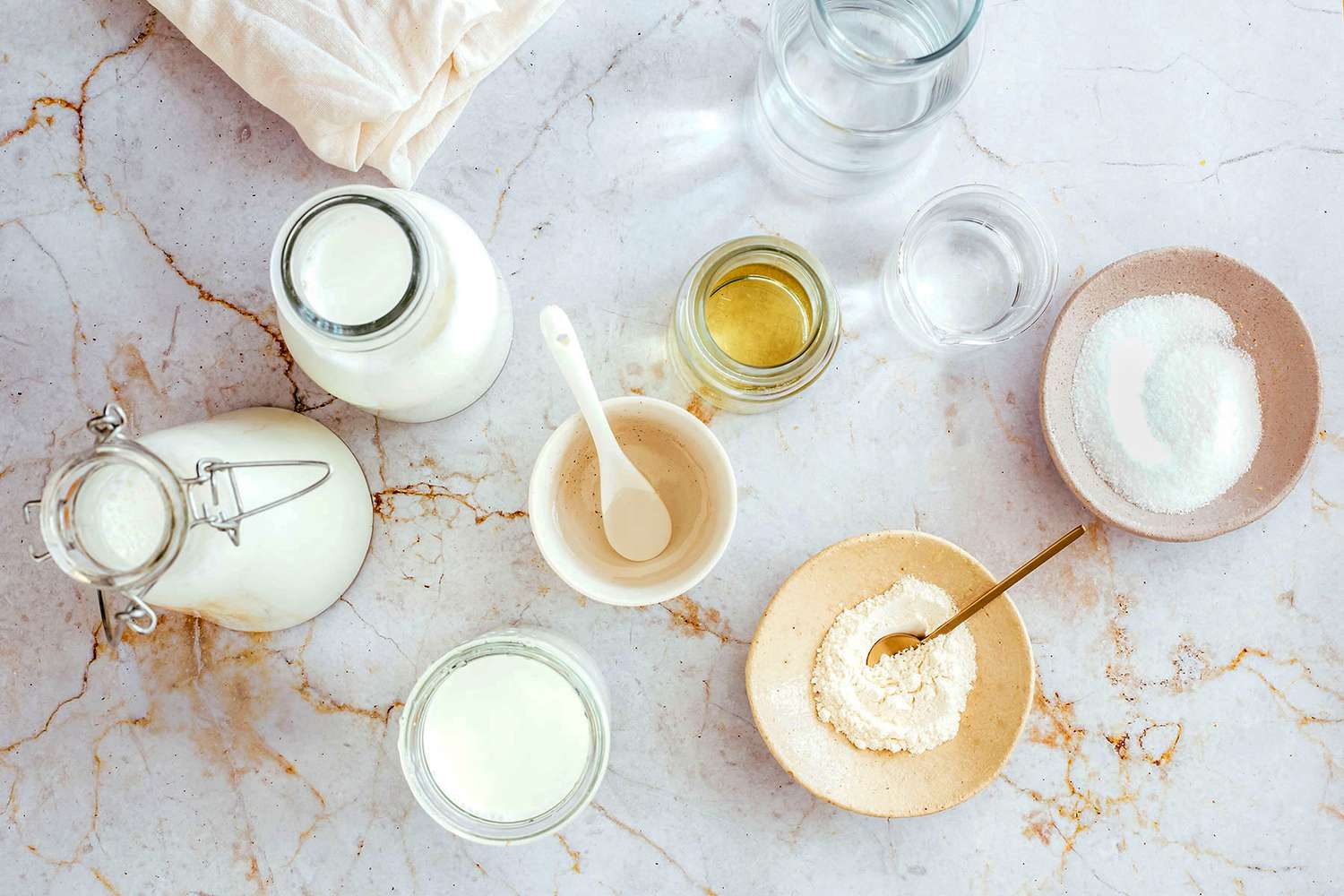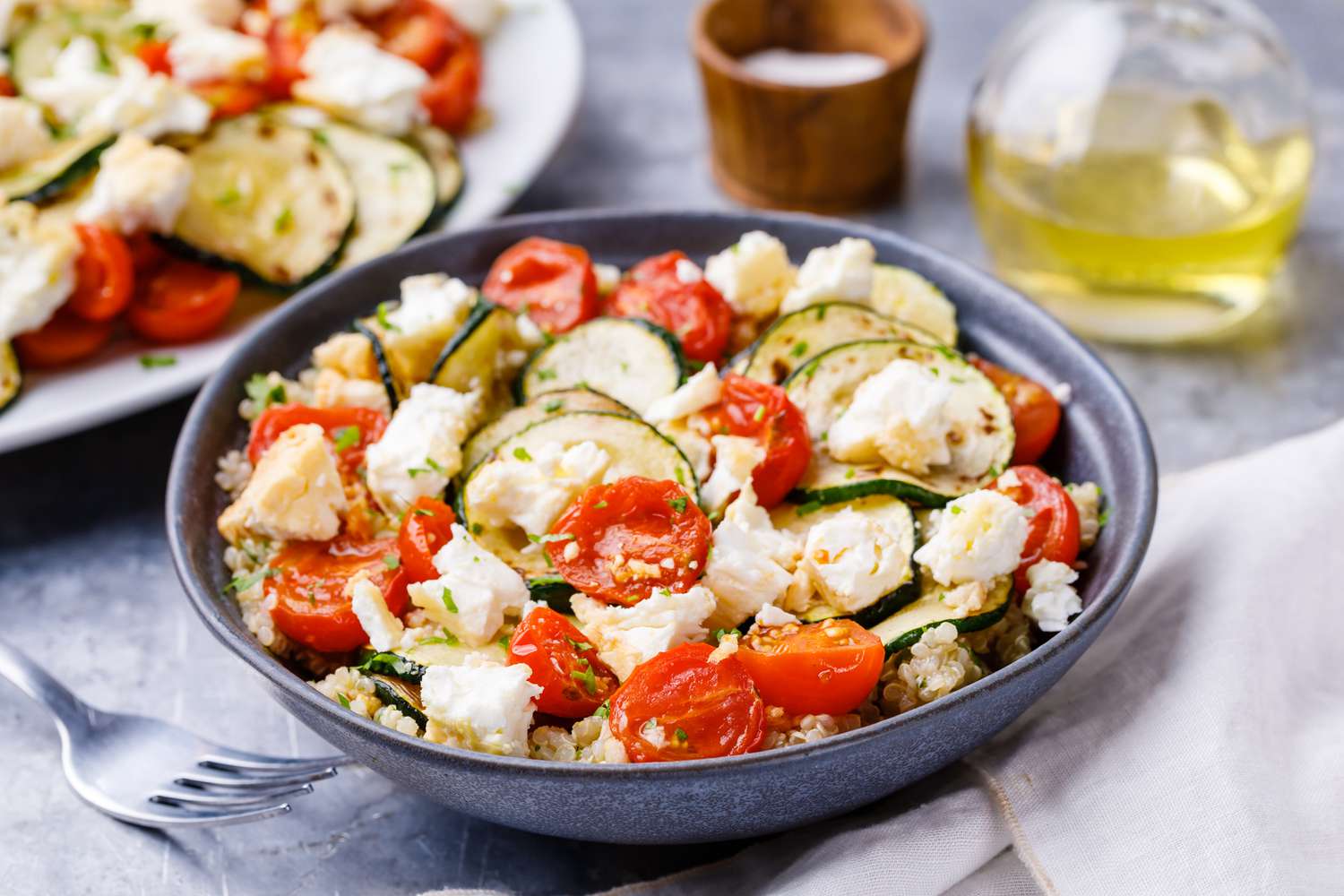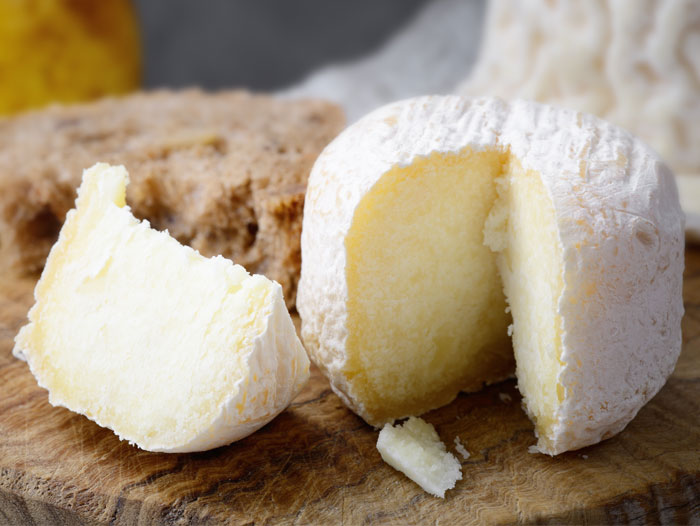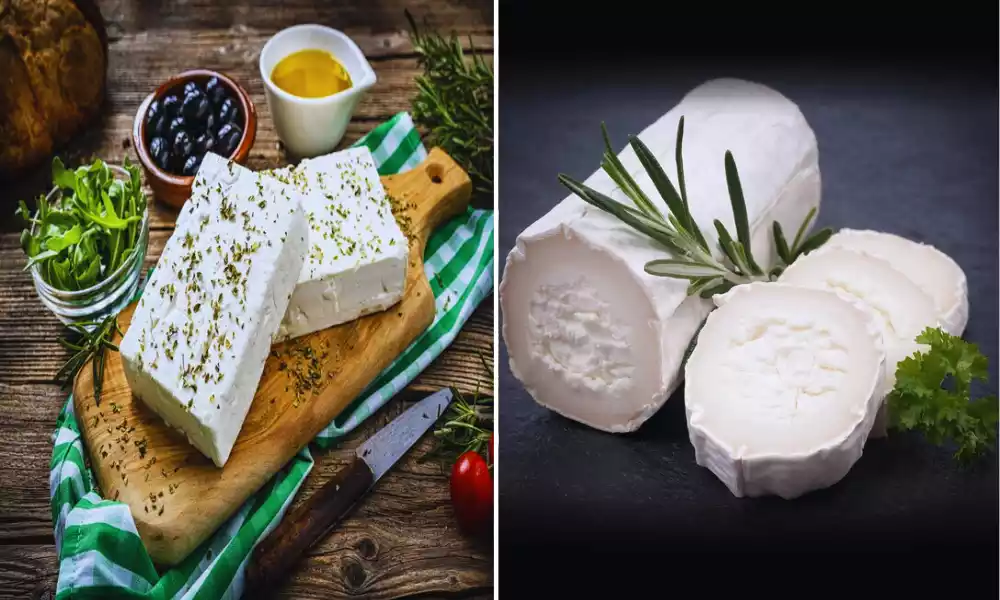Feta cheese and goat cheese are distinct yet popular dairy products. Feta, traditionally made from sheep’s milk or a mixture of sheep and goat’s milk, is a brined curd cheese known for its tangy and salty flavor. It hails from Greece and is crumbly in texture.
Goat cheese made purely from goat’s milk, offers a creamy and distinctively tart taste. Its texture varies from soft to firm, and it’s widely used in various cuisines for its unique flavor profile.
Definition of Feta Cheese
Feta cheese is a brined white cheese traditionally made in Greece from sheep’s milk or a mixture of sheep and goat’s milk. Renowned for its crumbly texture and tangy, salty flavor, feta is often used in salads, pastries, and as a table cheese.

It is typically cured in a brine solution, which gives it its characteristic taste and prolongs its shelf life. Feta’s unique taste and texture make it a favorite in Mediterranean cuisine and beyond.
How Feta Cheese is Made

The production of Feta cheese involves a distinctive process that gives it its unique characteristics:
- Milk Selection: Feta cheese is traditionally made using sheep’s milk, or a mixture of sheep and goat’s milk. The milk is sourced from local herds, and its quality is crucial for the final flavor of the cheese.
- Pasteurization: The milk is pasteurized to kill any harmful bacteria, ensuring the safety and consistency of the cheese.
- Culturing and Coagulation: Starter cultures are added to the milk to begin the fermentation process. Then, rennet is added to coagulate the milk, turning it into curds and whey.
- Cutting the Curd: The solid curds are cut into smaller pieces, which allows the whey to be expelled. The size of the curd pieces can affect the final texture of the cheese.
- Draining: The curds are drained to remove as much whey as possible. This process can be done in cloth bags or molds.
- Salting and Shaping: The curds are salted, which aids in flavor development and acts as a preservative. The cheese is then shaped, often into blocks or slabs.
- Brining: The shaped cheese is placed in a saltwater brine solution. This brining process is critical for developing Feta’s signature tangy flavor and crumbly texture. The duration of brining can vary, affecting the final taste and texture.
- Aging: Feta is aged for several weeks to several months. Aging allows the flavors to develop and intensify. The cheese is typically stored in barrels or tins during this period.
- Packaging and Storage: After aging, Feta is often packaged in brine to maintain its moisture and flavor. It’s stored in cool temperatures until it’s ready for consumption.
The specific methods and ingredients used can vary, especially outside of Greece, but this general process outlines the traditional method for making authentic Feta cheese.
Common Uses of Feta Cheese in Cuisine
Feta cheese is highly versatile in cuisine, celebrated for its tangy and salty flavor.

Here are some common uses of Feta cheese in various dishes:
- Salads: Perhaps most famously used in Greek salad, Feta adds a salty, creamy component to any salad. It pairs well with olives, tomatoes, cucumbers, and leafy greens.
- Pastries and Baked Goods: Feta is a popular filling in pastries, such as the Greek spanakopita (spinach pie) and tiropita (cheese pie). It’s also used in savory scones and breads.
- Topping for Pizzas and Flatbreads: Its crumbly texture and strong flavor make Feta an excellent topping for pizzas and flatbreads, often combined with vegetables and herbs.
- Dips and Spreads: Feta can be blended into creamy dips and spreads, mixed with herbs, garlic, and olive oil, perfect for serving with bread or vegetables.
- Stuffed Vegetables: Feta is commonly used to stuff vegetables like bell peppers, tomatoes, or zucchini, often baked or grilled.
- Egg Dishes: It adds a flavorful twist to omelets, scrambled eggs, and quiches.
- Grains and Pulses: Feta can be stirred into warm or cold rice, quinoa, or lentil dishes, adding a salty, creamy element.
- Marinated Cheese: Marinating Feta in olive oil with herbs and spices is a delicious way to enhance its flavor, served as an appetizer or snack.
- Sauces and Dressings: Crumbled Feta can be incorporated into sauces and dressings for a tangy, creamy addition to dishes.
- Grilling and Roasting: Feta doesn’t melt easily, making it great for grilling or adding to roasted vegetable dishes.
These uses showcase Feta’s adaptability, enhancing a wide range of dishes with its distinct flavor and texture.
Health Benefits of Feta Cheese
Feta cheese, while delicious, also offers several health benefits, making it a valuable addition to a balanced diet:
- Rich in Nutrients: Feta is a good source of essential nutrients like calcium, phosphorus, and B vitamins. Calcium and phosphorus are important for bone health, while B vitamins are vital for energy metabolism and maintaining various bodily functions.
- Probiotics: Traditional Feta cheese contains probiotics, beneficial bacteria that can aid in gut health. These probiotics can help maintain a healthy balance of gut flora, which is important for digestion and overall health.
- Lower Fat Content: Compared to many other cheeses, Feta often has a lower fat content, especially if it’s made with sheep’s milk or a mixture of sheep and goat’s milk. This can make it a better option for those watching their fat intake.
- Conjugated Linoleic Acid (CLA): Feta contains conjugated linoleic acid, a type of fatty acid that has been linked to various health benefits, including reduced body fat and improved immune function.
- Supports Bone Health: The high calcium content in Feta supports bone health. Regular consumption of calcium-rich foods like Feta can help maintain bone density and reduce the risk of osteoporosis.
- Good Source of Protein: Feta provides a decent amount of protein, essential for muscle maintenance and overall body function.
- Contains Beneficial Fatty Acids: Feta contains omega-3 and omega-6 fatty acids, known for their heart health benefits and potential role in reducing inflammation.
It’s important to consume Feta in moderation due to its high sodium content, which can be a concern for individuals with high blood pressure or those watching their salt intake. As with any food, the key is balance and moderation.
Definition of Goat Cheese
Goat cheese, also known as chèvre in French, refers to any cheese made from goat’s milk. Compared to cheeses made from cow’s milk, goat cheese is known for its distinctively tart and tangy flavor.

The texture of goat cheese can vary widely, from soft and spreadable fresh cheese to firmer, aged varieties. Its flavor profile can also change with aging, becoming more pronounced and complex. Goat cheese is versatile in culinary uses, popular in salads, spreads, and as an accompaniment to various dishes. Its unique taste and texture make it a favored choice in many cuisines.
How Goat Cheese is Made

The process of making goat cheese, also known as chèvre, involves several steps that contribute to its distinctive flavor and texture:
- Milk Collection: The process begins with collecting goat’s milk. The flavor of the cheese can be influenced by the breed of the goats and their diet.
- Pasteurization: The milk is typically pasteurized to kill any harmful bacteria, although some artisanal producers may opt for raw milk to develop unique flavors.
- Culturing: Starter cultures are added to the milk. These cultures are responsible for beginning the fermentation process, which is crucial for developing the cheese’s flavor and texture.
- Coagulation: Rennet, an enzyme, is added to the cultured milk to coagulate it, separating it into curds (solid) and whey (liquid). The type and amount of rennet can affect the texture of the final product.
- Curds Handling: The curds are then cut, stirred, and sometimes heated. This process expels more whey from the curds. The handling and treatment of the curds at this stage play a significant role in determining the cheese’s final consistency.
- Draining: The curds are drained to remove whey. This can be done using cheesecloth or molds. The length of the draining process will influence the cheese’s moisture content and texture – longer draining results in a firmer cheese.
- Salting and Shaping: The curds are salted for flavor and preservation. The cheese is then shaped into logs, rounds, or other forms. In some cases, additional flavors like herbs, spices, or edible flowers may be added.
- Aging (Optional): Depending on the type of goat cheese being produced, it may be aged. Aging can range from a few days to several months. Fresh goat cheeses are soft and spreadable, while aged varieties become firmer and develop stronger flavors.
- Packaging and Storage: The cheese is then packaged for sale. Fresh goat cheese is often stored and sold in its whey or a light brine to maintain its moisture.
The specific methods and ingredients can vary greatly, especially among artisan cheese makers, leading to a wide range of flavors and textures in goat cheeses.
Common Uses of Goat Cheese in Cuisine
Goat cheese, known for its creamy texture and tangy flavor, is a versatile ingredient in many cuisines.

Here are some common uses of goat cheese in cooking:
- Salads: Fresh goat cheese is often crumbled over salads, adding a creamy, tangy element. It pairs well with beets, nuts, and various greens.
- Spreads and Dips: Soft goat cheese can be whipped into spreads and dips, seasoned with herbs, garlic, or spices, and served with crackers, bread, or vegetables.
- Pasta and Risottos: Melted into pasta dishes or risottos, goat cheese adds a creamy texture and rich flavor.
- Pizza and Flatbreads: Goat cheese is a popular topping for pizzas and flatbreads, often combined with vegetables like spinach, caramelized onions, or sun-dried tomatoes.
- Stuffed Vegetables or Meats: It’s used as a stuffing ingredient for chicken breasts, mushrooms, or bell peppers, often mixed with herbs or other fillings.
- Baking: Goat cheese can be baked into savory pastries, tarts, and quiches, adding a creamy and tangy flavor.
- Appetizers: Served on a cheese platter, goat cheese is a delightful appetizer, especially when accompanied by fruit, honey, or nuts.
- Sauces: It can be incorporated into sauces to add creaminess and a distinct flavor to dishes.
- Sandwiches and Wraps: Goat cheese is spread on sandwiches and wraps, providing a tangy, creamy contrast to other ingredients.
- Grilled Dishes: When grilled, goat cheese becomes slightly crispy on the outside while remaining creamy inside, making it an excellent topping for grilled vegetables or as part of a grilled cheese sandwich.
These uses reflect the broad range of culinary applications for goat cheese, from simple spreads to more complex cooked dishes. Its unique flavor profile makes it a favorite in both casual and gourmet cooking.
Health Benefits of Goat Cheese
Goat cheese offers several health benefits, making it a nutritious addition to a balanced diet:
- Easier Digestion: Goat cheese is often easier to digest than cheese made from cow’s milk. This is due to the smaller fat molecules in goat’s milk, which are more easily broken down by the digestive system.
- Lower Lactose Content: Goat milk has slightly lower levels of lactose compared to cow’s milk, which can be beneficial for people with mild lactose intolerance.
- High in Nutrients: Goat cheese is a good source of essential nutrients, including calcium, protein, phosphorus, vitamin B2 (riboflavin), and potassium. These nutrients are important for bone health, muscle function, and overall metabolism.
- Heart Health: Goat cheese contains healthy fats, including medium-chain fatty acids, which can support heart health. These fats are believed to support healthy cholesterol levels and provide anti-inflammatory benefits.
- Probiotics: Similar to other fermented dairy products, goat cheese can contain probiotics, beneficial bacteria that support gut health.
- Rich in Vitamins and Minerals: It provides a good amount of vitamins A, D, and K, as well as iron, magnesium, and more, contributing to various bodily functions and overall health.
- Weight Management: Goat cheese tends to be lower in calories and fat than some traditional cow’s milk cheeses, which can be advantageous for those managing their weight.
- Conjugated Linoleic Acid (CLA): Goat cheese contains CLA, a type of fatty acid associated with several health benefits, including reduced body fat and improved immune function.
While goat cheese offers these health benefits, it should be consumed in moderation, especially by individuals who are sensitive to dairy or watching their calorie and fat intake. As with any dairy product, it’s part of a balanced diet rather than a standalone health solution.
Comparison table of Feta Cheese vs Goat Cheese
Here’s a comparison table highlighting the key differences between Feta Cheese and Goat Cheese:
| Aspect | Feta Cheese | Goat Cheese |
|---|---|---|
| Origin | Greece | Worldwide, with notable production in France |
| Milk Source | Sheep’s milk, or a mix of sheep and goat’s milk | Exclusively goat’s milk |
| Texture | Crumbly and firm | Ranges from soft and creamy to firm |
| Flavor | Tangy, salty | Tart can range from mild to strong |
| Aging Process | Brined, aged for several months | Varies, from fresh to aged |
| Culinary Uses | Salads, pastries, table cheese | Salads, spreads, baking, topping |
| Nutritional Profile | Generally higher in sodium due to bringing | Typically lower in lactose, can be easier to digest |
| Color | White | White, but can vary |
This table offers a basic comparison, but keep in mind that variations exist within each type of cheese depending on specific production methods and regions.
Importance of understanding their differences
Understanding the differences between Feta cheese and Goat cheese is important for several reasons:
- Culinary Applications: Each cheese brings its unique texture and flavor to dishes. Feta, with its salty and tangy profile, is excellent in salads like Greek salad, in pastries, or as a garnish. Goat cheese, ranging from soft to firm, is versatile in spreads, as a topping, or baked into dishes. Knowing their differences aids in selecting the right cheese to complement and enhance the flavors of a meal.
- Nutritional Considerations: While both are dairy products, their nutritional profiles differ. Feta, often higher in sodium due to the brining process, maybe a consideration for those monitoring salt intake. Goat cheese is generally easier to digest for people with mild lactose sensitivities, as goat’s milk has a different protein structure compared to sheep or cow’s milk.
- Cultural and Regional Varieties: Each cheese has a rich cultural history and understanding this can enhance appreciation of the cheese. For instance, traditional Feta cheese is a key component of Greek cuisine, while goat cheeses are integral to French and Mediterranean culinary traditions.
- Allergen Information: For individuals with specific dairy allergies, knowing the source of the milk (sheep, goat, or cow) is crucial to avoid allergic reactions.
- Pairing with Other Foods and Wines: Different cheeses pair differently with wines and other foods. Feta, with its strong, salty profile, pairs well with robust wines and olives, while the creaminess of goat cheese complements lighter wines and fruits.
- Cooking Behavior: Feta and goat cheese behave differently when cooked. Feta doesn’t melt easily, making it suitable for grilling or baking in chunks, whereas soft goat cheese can melt and spread, ideal for sauces or as a topping.
Understanding these differences can enhance both the culinary experience and dietary choices, making it important for chefs, food enthusiasts, and consumers alike.
Varieties and Subtypes
Both Feta cheese and Goat cheese come in various varieties and subtypes, influenced by regional production methods, aging processes, and additional ingredients.
Here’s a look at some of these varieties:
Feta Cheese Varieties
- Greek Feta: Traditional Greek Feta, which is PDO (Protected Designation of Origin) protected, is made primarily from sheep’s milk or a mixture of sheep and goat’s milk. It is known for its tangy flavor and crumbly texture.
- Bulgarian Feta: This variety is creamier and less salty than Greek Feta. It’s typically made with yogurt, adding a distinct tartness.
- French Feta: Typically milder and less crumbly than Greek Feta. It’s often made with sheep’s milk and has a smooth texture.
- Danish Feta: This type is creamier and often sold in a creamy consistency, unlike the crumbly texture of traditional Greek Feta.
Goat Cheese Varieties
- Fresh Goat Cheese (Chevre): This is the most common type, soft, spreadable, and with a mild, tangy flavor. It’s often found in logs or rounds.
- Aged Goat Cheese: As it ages, goat cheese becomes firmer and more flavorful. Examples include Crottin de Chavignol and Valençay, both of which are French.
- Flavored Goat Cheese: These are fresh goat cheeses blended with additional ingredients like herbs, honey, or edible flowers for extra flavor.
- Hard Goat Cheese: Aged longer, these cheeses have a firm texture and robust flavor. Examples include Spanish Ibores and Dutch Gouda made with goat’s milk.
- Blue Goat Cheese: Similar to blue cow’s milk cheese but made with goat’s milk, it has veins of blue mold that impart a strong, tangy flavor.
Each variety brings its unique taste and texture to the table, influenced by local traditions, the type of milk used, and the specific production and aging processes. This diversity makes both Feta and Goat cheese exciting and versatile ingredients in various culinary traditions.
Pairing with Other Foods
Pairing Feta cheese and Goat cheese with other foods can enhance and balance flavors in a meal. Here are some pairing suggestions for each:
Feta Cheese Pairings
- Vegetables: Feta pairs well with fresh vegetables like tomatoes, cucumbers, bell peppers, and olives. It’s especially popular in Greek salads.
- Fruits: Watermelon, grapes, and pears complement the salty tang of Feta.
- Breads and Grains: Whole grain breads, pitas, and grain salads like tabbouleh or quinoa salads work well with Feta.
- Meats: Grilled lamb, chicken, and beef can be enhanced with crumbled Feta.
- Herbs and Spices: Oregano, mint, basil, and dill are excellent with Feta.
- Wines and Beverages: Dry white wines, rosé, and light reds like Pinot Noir pair nicely with Feta. For non-alcoholic options, try sparkling water with a citrus twist.
Goat Cheese Pairings
- Fruits: Fresh or dried fruits like figs, apricots, cherries, and berries are great with Goat cheese.
- Nuts and Honey: Almonds, walnuts, and a drizzle of honey enhance the flavor of Goat cheese.
- Bread: Crusty bread, crostini, and crackers are perfect for spreading soft Goat cheese.
- Vegetables: Roasted beets, grilled asparagus, and mixed green salads pair well with Goat cheese.
- Jams and Chutneys: Sweet and tangy preserves like fig jam or apricot chutney complement Goat cheese.
- Wines and Beverages: Crisp white wines like Sauvignon Blanc, sparkling wines, or light reds like Gamay are good choices. For non-alcoholic pairings, herbal teas or iced lemonade can be refreshing.
Both Feta and Goat cheese are incredibly versatile and can be paired with a wide range of foods and beverages, making them popular choices for culinary explorations and entertaining.
Final Opinion
Feta cheese and Goat cheese are distinct in their origins, flavors, and culinary applications. Feta, known for its tangy, salty taste and crumbly texture, is traditionally made from sheep’s or a mix of sheep and goat’s milk, originating from Greece.
Goat cheese, made solely from goat’s milk, offers a creamy texture and a tart flavor, with a versatility that spans from fresh to aged varieties. Each cheese brings unique characteristics to the table, enhancing a wide range of dishes in global cuisines.

